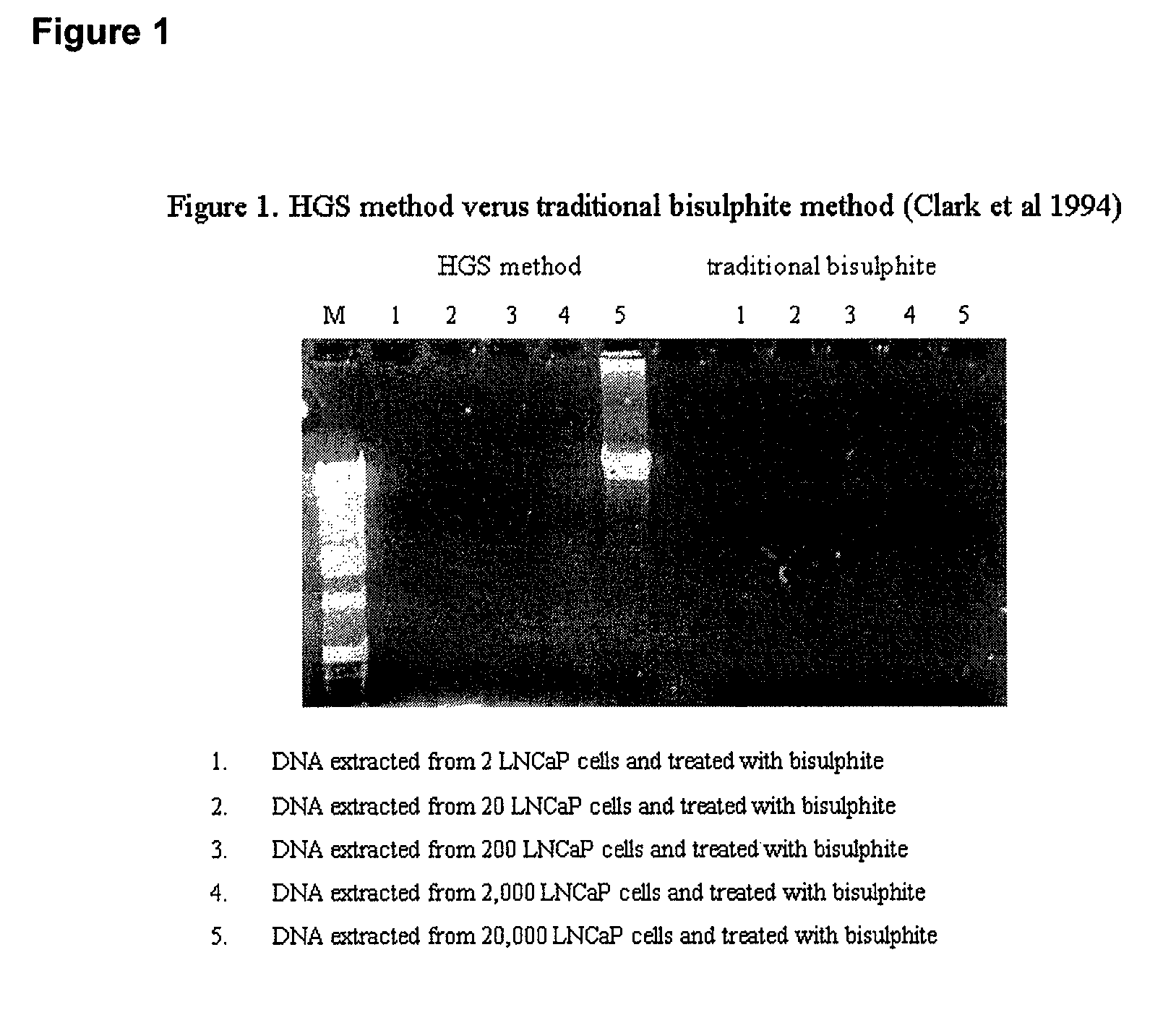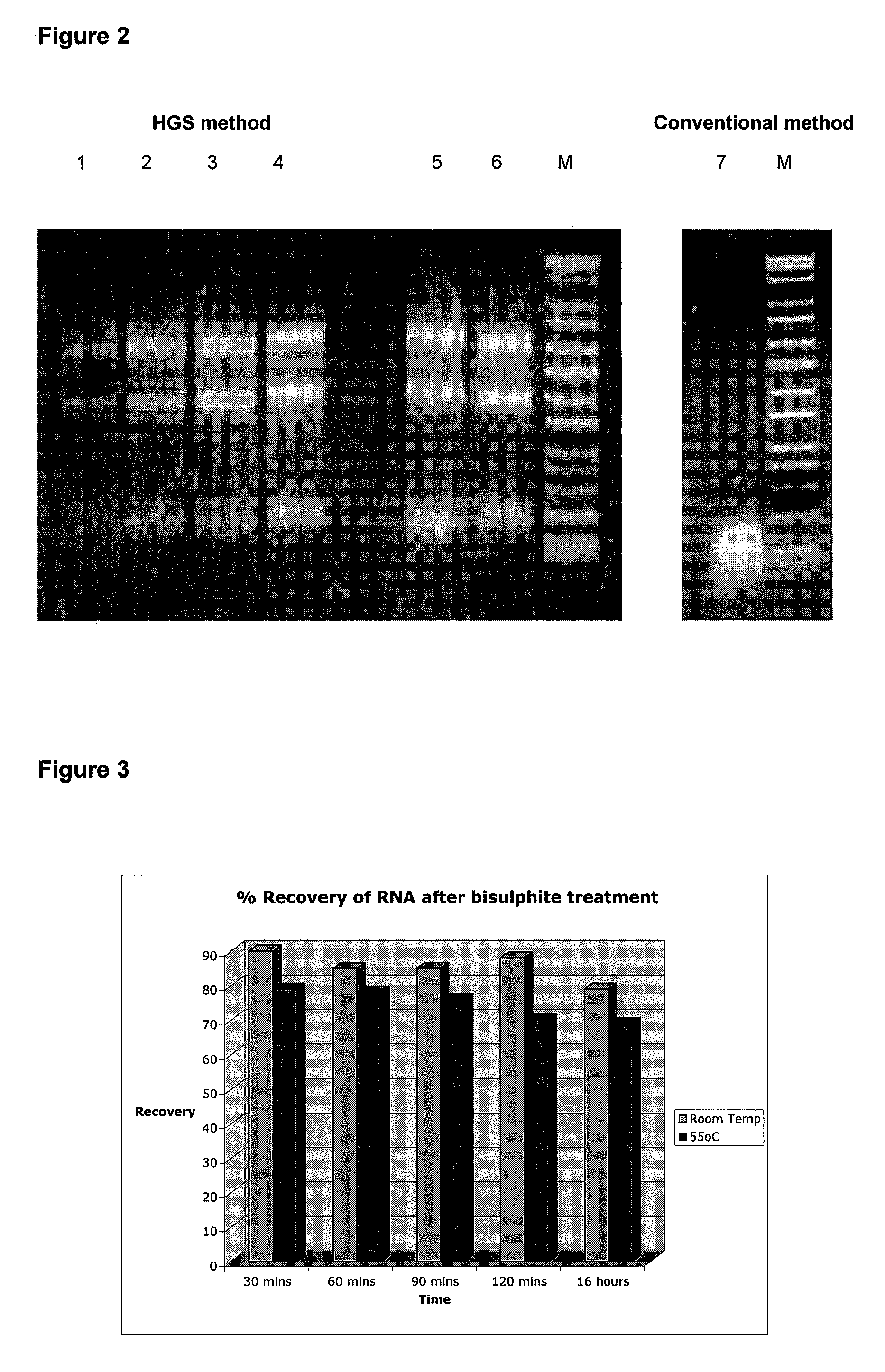Bisulphite reagent treatment of nucleic acid
a technology of methylation and bisulphite, which is applied in the field of modified methods for treating nucleic acid, can solve the problems of reducing the methylation status of small cells, affecting the quality of methylation, so as to minimize the loss of samples
- Summary
- Abstract
- Description
- Claims
- Application Information
AI Technical Summary
Benefits of technology
Problems solved by technology
Method used
Image
Examples
examples
Methods and Reagents
[0113]Chemicals were obtained as follows: Agarose from BioRad (Hercules Calif.; certified molecular biology grade #161-3101); Acetic acid, glacial, from BDH (Kylsyth, Australia; AnalaR 100015N); ethylenediamine tetraacetic acid (EDTA) from BDH (AnalaR 10093.5V); Ethanol from Aldrich (St. Louis Mo.; 200 proof E702-3); Isopropanol from Sigma (St. Louis Mo.; 99%+Sigma 1-9516); Mineral oil from Sigma (M-5904); Sodium acetate solution 3M from Sigma (S-7899); Sodium chloride from Sigma (ACS reagent S9888); and Sodium hydroxide from BDH (AnalaR #10252.4X).
[0114]Enzymes / Reagents were obtained as follows: EcoR1 from Roche (Indianapolis Ind.; #87930626, 10 units / μl); HindIII from Biolabs (Beverly Mass.; #R01045, 10 units / μl); PCR master mix from Promega (Madison Wis.; #M7505); and DNA markers from Sigma (Direct load PCR low ladder 100-1000 bp, Sigma D-3687 and 100-10 Kb, Sigma D-7058).
[0115]Solutions were as follows: (1) 10 mM Tris / 0.1M EDTA, pH 7.0-12.5; (2) 3M NaOH (6 g ...
PUM
| Property | Measurement | Unit |
|---|---|---|
| temperature | aaaaa | aaaaa |
| temperature | aaaaa | aaaaa |
| temperature | aaaaa | aaaaa |
Abstract
Description
Claims
Application Information
 Login to View More
Login to View More - R&D
- Intellectual Property
- Life Sciences
- Materials
- Tech Scout
- Unparalleled Data Quality
- Higher Quality Content
- 60% Fewer Hallucinations
Browse by: Latest US Patents, China's latest patents, Technical Efficacy Thesaurus, Application Domain, Technology Topic, Popular Technical Reports.
© 2025 PatSnap. All rights reserved.Legal|Privacy policy|Modern Slavery Act Transparency Statement|Sitemap|About US| Contact US: help@patsnap.com



